Up in Arms

Brief Synopsis
Cast & Crew
Elliott Nugent
Danny Kaye
Dinah Shore
Dana Andrews
Constance Dowling
Louis Calhern
Film Details
Technical Specs

Synopsis
At work at the Manhattan Medical Building, hypochondriac elevator operator Danny Weems wreaks havoc by pestering the doctors for medicine and diagnosing all the patients with incurable diseases. Nurse Virginia Merrill tries to attract his attention, but he swoons over another nurse, Mary Morgan, not realizing that she only likes him platonically. That night, the three go on a double date with Danny's roommate, Joe Nelson, and during the evening, Virginia flirts with Danny, who fails to notice that Joe and Mary are falling in love. After the date, Danny learns that he has been drafted and, terrified of the health risks posed by Army life, begs Joe to plead his case at the draft board. When Joe does, howvever, he discovers that he, too, has been drafted, and that both must report to duty. Months later, during basic training, Danny and Joe see Virginia and Mary, now officer nurses in their battalion, but because of their different ranks, it is difficult for them to talk together. They steal away to a carnival, where Danny finds a booth that allows them to record their voices onto an album. Back at the base, fellow soldiers Blackie and Butterball tease Danny about his hypochondria, and Joe begins to fight them in defense of his friend. The brawl stops when they learn that they must sail to a base in the South Pacific in thirty minutes. Danny runs through the busy base to say goodbye to Mary, who is scheduled to stay behind, but when a sergeant almost catches them together, she hides in a supply truck, which is quickly loaded onto the boat. At sea, Mary dresses as a male soldier to avoid being caught on board, while Danny and Joe plan to smuggle her across the boat into the nurses' quarters, where Virginia is staying. Danny sings to distract the men, but Mary only makes it halfway. That night, Danny tries to lead her the rest of the way, but becomes lost, and they mistakenly enter the stateroom of the lead officer, Col. Ashley. Although Ashley sees them, they manage to escape back to Danny's troop's bunk, where Mary hides under his bed. Desperate, Danny then pretends it is morning so his bunkmates will wake and leave the room, and when all the men but Joe are gone, Danny watches as Mary rushes into Joe's arms. The next day, as everyone gossips about Danny's adventure with an unknown woman, a heartbroken Danny confesses everything to Ashley, who prepares to court-martial him. Virginia, thinking that a woman will receive less punishment than a man, tells Ashley that she is the woman in question, and that she snuck into Danny's room out of love and he only tried to protect her. When Ashley releases them both, Danny borrows Blackie's phonograph to play the record from the fair. Blackie catches him and knocks him out, and a semi-conscious Danny, while dreaming about Virginia, confesses to Ashley that he actually smuggled Mary through the boat. When the boat reaches the new base, Danny is put in the brig, but Japanese soldiers kidnap him and bring him to their general. Danny overpowers the general, and, after donning his uniform, inadvertently commands the Japanese soldiers to follow him into a large pit, where they are captured by the American soldiers. Now hailed as a hero, Danny embraces Virginia.

Director

Elliott Nugent
Cast

Danny Kaye
Dinah Shore

Dana Andrews
Constance Dowling

Louis Calhern
George Mathews
Benny Baker

Elisha Cook Jr.

Lyle Talbot

Walter Catlett

George Meeker
Richard Powers

Margaret Dumont
Donald Dickson
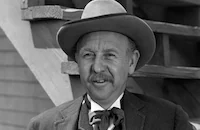
Charles Arnt

Charles Halton
Tom Dugan

Sig Arno
Harry Hayden
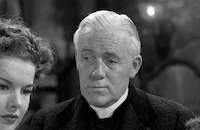
Charles D. Brown
Maurice Cass
Fred Essler
Rudolf Friml Jr.
Knox Manning
Betty Alexander
Gale Amber
Gloria Anderson
Betty Bryant

Alma Carroll
Joan Chaffee

Linda Christian
Virginia Cruzon
Helen Darling
Dorothy Garner
Inna Gest

Renee Haal
Betty Hall
June Harris
Eloise Hart
Mary Ann Hyde
Ellen Johnson
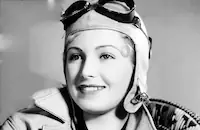
June Lang
Rosalyn Lee
Florence Lundeen
Mickey Malloy
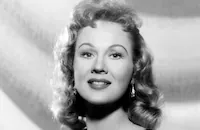
Virginia Mayo
Dorothy Merritt
Lorraine Miller
Mary Moore
Kay Morey
Diana Mumby
Lee Nugent

Dorothy Patrick
Shelby Payne
Ruth Valmy
Ricki Van Dusen
Alice Wallace
Virginia Wicks
Audrey Young

William Davidson
Oliver Prickett
Larry Steers
Eddie Waller
Matt Mchugh
Pete Cusanelli
Maryon Adair
Herbert Evans
Stanley Gilbert

John Hamilton
Isabel Withers
Hans Schumm

Eddie Kane
Frank O'connor
Virginia Farmer
Anne O'neal
Bill Hunter

George Mckay
George Magrill
James Harrison
Charles Vincent
Terrance Ray
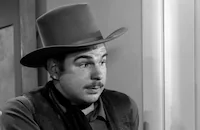
Matt Willis
Jack Gardner
Tom Coleman
Lynn Bubanks

Jack Mower
David Newell
Jon Gilbreath
Ruth Herscher
Diedra Vale

Maude Eburne
Francis "dink" Trout
Lillian Randolph
Tom Cowan
John Kelly
Fred Aldrich
Al Benault
Frosty Royce
Leonard Strong
Peter Chong
J. Alex Havier
Bruce Wong
George T. Lee
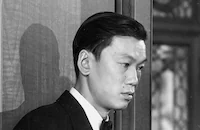
Benson Fong
Maxine Armour
Bonnie Barlowe
Karen Knight
Audrey Korn
Helen Mcallister
Marjorie Raymond
Joet Robinson
Eleanor Shaw
June Wayne
Barbara Williams
Crew
Harold Arlen
Gunner's Mate 1/c Marvin C. Beck
R. O. Binger
Allen Boretz
Howard Bristol
Mcclure Capps
Stewart Chaney
Danny Dare
Lt. Richard Day
Perry Ferguson
Sylvia Fine
Louis Forbes
Louis Germonprez
Samuel Goldwyn
Samuel Goldwyn
D. Harms
Don Hartman
Don Hartman
Lt. Eunice C. Hatchitt
Ray Heindorf
Natalie Kalmus
Ted Koehler
Fred Lau
Max Liebman
John F. Link
Daniel Mandell
Walter Mayo
James Newcom
Morgan Padelford
Robert Pirosh
Ray Rennahan
Nina Roberts
Bernard Schubert
Clarence Slifer
Robert Stephanoff
Col. Hamilton Templeton
Capt. Walter Voegler
Miles White

Photo Collections
Videos
Movie Clip



Film Details
Technical Specs

Award Nominations
Best Score
Best Song
Articles
Up in Arms
Goldwyn saw in Kaye another dynamic personality in the style of Eddie Cantor, and even took to calling Danny "Eddie" in their early days together. For Kaye's debut feature, Goldwyn turned to the same source material – Owen Davis' 1923 stage play The Nervous Wreck - which had formed the basis for one of Eddie Cantor's stage musicals, Whoopie!, which was in turn filmed in two-strip Technicolor in 1930. The final story for Up in Arms (1944) bears only a passing resemblance to either, however. In the film, Danny Weems (Kaye) is a hopeless hypochondriac who gets a job as an elevator operator in a medical building so that he can harangue the doctors. Also working in the building is nurse Virginia Merrill (Dinah Shore), who fails to attract Danny's attention because he has eyes for another nurse, Mary Morgan (Constance Dowling). Danny is drafted into the army along with his friend and roommate Joe Nelson (Dana Andrews). Joe and Mary are falling in love, and after the girls become officer nurses, confusion ensues aboard ship as everyone is headed to their new stations in the Pacific Theater. Of course, the plot is mostly the vehicle to contain a series of musical interludes for Kaye and for Dinah Shore, making her own acting debut (she had previously appeared as herself in the 1943 Warner Bros. wartime revue Thank Your Lucky Stars).
Samuel Goldwyn had initially thought about giving Kaye a major makeover before his feature debut. In his biography Goldwyn, A. Scott Berg quotes the producer's wife Frances, who recalled, "In that first screen test Danny's face was all angles and his nose so long and thin it almost was like Pinocchio's. More tests were made. Then more. In each a new makeup was tried and different lightings. And none were good." The unspoken worry was that Kaye's look was too "ethnic" (i.e. Jewish) and the mogul feared this would not play well in Middle America. After months of pondering the problem, Goldwyn hit upon what he thought would be a solution; he had Kaye's red hair dyed blond for the next round of tests.
Sylvia Fine continued to write material for her husband as he began his feature film career, and she also sought to retain the established tone of his work. She later told Berg, "Everybody, Sam Goldwyn included, thought a comedian who wasn't cruel or bombastic had to play a nebbish. But that's not who Danny was. He played the eager beaver. That's quite different. He'd trip himself up in enthusiasm." Kaye's first musical number in Up in Arms is a perfect introduction to his "git-gat-gittle" style. Written by Fine and Max Liebman, "The Lobby Number" occurs as our double-dating couples wait impatiently for a film to start, and includes clever swipes at the indulgence of opening credits in movies: "Produced by Manic and directed by Depressive!" Another Fine-Liebman number, "Melody in 4-F," was originally written for Kaye's appearance in the 1941 Cole Porter Broadway revue Let's Face It, and was included after receiving special permission from Porter.
Careful consideration was also given to the casting of Kaye's leading lady in Up in Arms. Goldwyn had recently signed a young actress named Virginia Jones, who he had seen performing as a straight woman to a costumed horse act in a Billy Rose revue called "Mrs. Astor's Pet Horse." She had taken the screen name Virginia Mayo and had submitted to months of Goldwyn-financed lessons in speech, poise, dancing and acting. She was also already acquainted with Danny Kaye from their days in vaudeville. As she told Michael Freedland in The Secret Life of Danny Kaye, "I told Danny I was leaving to go to Hollywood. He said that he was too. I said I was going to work for Sam Goldwyn. He said that was who he was going to work for. Then we both mentioned Up in Arms. It was quite a coincidence." Mayo had to settle for a small part in the film as one of the Goldwyn Girls, because she "froze" in her early screen tests.
Wanting to bring something new to the dance numbers in the film, Goldwyn first attempted to lure Agnes de Mille, fresh from the Broadway success of Oklahoma! to stage the choreography. Failing to persuade her, Goldwyn hired Danny Dare, who had created the dance moves for such Paramount films as Star Spangled Rhythm and Holiday Inn (both 1942).
Up in Arms was unabashedly patriotic and proved to be ideal material for distribution to the troops. Goldwyn affixed a card in the closing credits, in fact, proclaiming that "The picture you have just seen is being shown free in combat areas with the compliments of the American Motion Picture Industry." Goldwyn later found another opportunity to use the goodwill engendered by the film to his advantage. Along with other independent producers in Hollywood, Goldwyn had been embroiled for several years in a dispute with the major studios, which he felt were illegally keeping his films from earning revenues at a proper rental rate in most large city theaters. The major studios owned the majority of the large theaters in bigger cities, and The Society of Independent Motion Picture Producers sought to publicize a long-pending antitrust complaint against the majors and their vertical monopoly of movie production, distribution and exhibition. Goldwyn decided to stake a claim in Reno, Nevada, and hold a screening of Up in Arms in the El Patio Ballroom, in defiance of the large studio-owned theater in town. He announced that the opening night proceeds would be donated to the local Red Cross. After haggling with the local fire Marshall, the show went on. Mary Pickford, one of the founders of the independent United Artists, was in attendance, and helped the cause by publicly railing against the big studio monopoly: "To produce Up in Arms Mr. Goldwyn spent a whole year of intensive work and $2,000,000 of his own money. This is a lot of time and a great deal of money. But to what avail? Only to be told upon completion that he shall not be permitted to show his picture except as dictated by a monopoly."
Up in Arms proved to be both a critical and a box-office hit, earning $3.3 million, and made Danny Kaye an international star. He went on to make four more hits in a row for Goldwyn, all of them costarring Virginia Mayo.
Producer: Samuel Goldwyn
Associate Producer: Don Hartman
Director: Elliott Nugent
Screenplay: Don Hartman, Allen Boretz, Robert Pirosh
Story: Owen Davis (play The Nervous Wreck)
Cinematography: Ray Rennahan
Film Editing: Daniel Mandell, James Newcom
Songs: Sylvia Fine, Max Liebman
Art Direction: Stewart Chaney, Perry Ferguson
Costume Design: Miles White
Makeup: Robert Stephanoff
Cast: Danny Kaye (Danny Weems), Dinah Shore (Nurse Lt. Virginia Merrill), Dana Andrews (Joe Nelson), Constance Dowling (Mary Morgan), Louis Calhern (Col. Ashley), George Mathews (Private Blackie Snodgrass), Elisha Cook, Jr. (Info Jones), Lyle Talbot (Sgt. Gelsey), Margaret Dumont (Mrs. Willoughby).
C-106m.
by John M. Miller

Up in Arms
Virginia Mayo (1920-2005)
She was born Virginia Clara Jones in St. Louis, Missouri on November 30, 1920, and got her show business start at the age of six by enrolling in her aunt's School of Dramatic Expression. While still in her teens, she joined the nightclub circuit, and after paying her dues for a few years traveling across the country, she eventually caught the eye of movie mogul Samuel Goldwyn. He gave her a small role in her first film, starring future husband, Michael O'Shea, in Jack London (1943). She then received minor billing as a "Goldwyn Girl," in the Danny Kaye farce, Up In Arms (1944). Almost immediately, Goldwyn saw her natural movement, comfort and ease in front of the camera, and in just her fourth film, she landed a plumb lead opposite Bob Hope in The Princess and the Pirate (1944). She proved a hit with moviegoers, and her next two films would be with her most frequent leading man, Danny Kaye: Wonder Man (1945), and The Kid from Brooklyn (1946). Both films were big hits, and the chemistry between Mayo and Kaye - the classy, reserved blonde beauty clashing with the hyperactive clown - was surprisingly successful.
Mayo did make a brief break from light comedy, and gave a good performance as Dana Andrews' unfaithful wife, Marie, in the popular post-war drama, The Best Years of Their Lives (1946); but despite the good reviews, she was back with Kaye in The Secret Life of Walter Mitty (1947), and A Song Is Born (1948).
It wasn't until the following year that Mayo got the chance to sink her teeth into a meaty role. That film, White Heat (1949), and her role, as Cody Jarrett's (James Cagney) sluttish, conniving wife, Verna, is memorable for the sheer ruthlessness of her performance. Remember, it was Verna who shot Cody¿s mother in the back, and yet when Cody confronts her after he escapes from prison to exact revenge for her death, Verna effectively places the blame on Big Ed (Steve Cochran):
Verna: I can't tell you Cody!
Cody: Tell me!
Verna: Ed...he shot her in the back!!!
Critics and fans purred over the newfound versatility, yet strangely, she never found a part as juicy as Verna again. Her next film, with Cagney, The West Point Story (1950), was a pleasant enough musical; but her role as Lady Wellesley in Captain Horatio Hornblower R.N. (1951), co-starring Gregory Peck, was merely decorative; that of a burlesque queen attempting to earn a university degree in the gormless comedy, She¿s Working Her Way Through College (1952); and worst of all, the Biblical bomb, The Silver Chalice (1954) which was, incidentally, Paul Newman's film debut, and is a film he still derides as the worst of his career.
Realizing that her future in movies was slowing down, she turned to the supper club circuit in the 60s with her husband, Michael O'Shea, touring the country in such productions as No, No Nanette, Barefoot in the Park, Hello Dolly, and Butterflies Are Free. Like most performers who had outdistanced their glory days with the film industry, Mayo turned to television for the next two decades, appearing in such shows as Night Gallery, Police Story, Murder She Wrote, and Remington Steele. She even earned a recurring role in the short-lived NBC soap opera, Santa Barbara (1984-85), playing an aging hoofer named "Peaches DeLight." Mayo was married to O'Shea from 1947 until his death in 1973. She is survived by their daughter, Mary Johnston; and three grandsons.
by Michael T. Toole
Virginia Mayo (1920-2005)
Quotes
Trivia
Notes
The working title of this film was With Flying Colors. All of the actresses who played nurses in Up in Arms are listed collectively onscreen as "The Goldwyn Girls." Danny Kaye's character was based on the character "The Nervous Wreck" from the play of the same name by Owen Davis, which opened in New York in 1923. The play, which bears little resemblance to the film, was in turn based on the 1921 magazine serial The Wreck by Edith J. Rath and Sam H. Harris, which was published as a novel called The Nervous Wreck in 1923. In 1928, Florenz Ziegfeld staged a musical version of Davis' play called Whoopee starring Eddie Cantor.
Although a December 1942 Los Angeles Examiner article states that Samuel Goldwyn hired well-known shorts producer Pete Smith to narrate the film, and a December 1943 Hollywood Reporter news item confirms that Smith completed the commentary, Knox Manning is credited onscreen as the narrator. Modern sources note that Virginia Mayo, who played a nurse in the film, was considered for the part of "Virginia," but eventually lost the role to popular singer Dinah Shore. Mayo went on, however, to star in Goldwyn's 1944 The Princess and the Pirate, opposite Bob Hope, and other Goldwyn pictures. Although the early Hollywood Reporter production charts list John F. Link as the film's editor, the onscreen credits name Daniel Mandell and James Newcom. Although Hollywood Reporter news items add Lenore Aubert, Hal K. Dawson, and dancers John Coffey, Walton Walker and John Roche to the cast, their appearance in the film has not been confirmed. According to an April 1944 Hollywood Reporter article, during production, associate producer Don Hartman sued Goldwyn for allegedly ridiculing him publicly, and then refusing to release him from his contract.
Up in Arms marked the motion picture debut of Broadway star Danny Kaye (1913-1987), and opened to uniformly rave reviews. In February 1944, the New York Times reported that the usual recording procedure, in which the entertainer sang his or her song in the studio and then lip-synched on camera, was made far more complicated in this film due to Kaye's complex scatting. The song "Melody in 4F," which was co-written by Kaye's wife, Sylvia Fine, was taken from Kaye's Broadway hit, Let's Face It, and was characteristic of the tongue-twisting numbers that he performed throughout his career. The popular star, who began on Broadway in 1939, had already turned down a contract with M-G-M, when Goldwyn cast him in Up in Arms. After this film made Kaye an international success, he went on to do three more with Goldwyn before moving on to Warner Bros. In his later career, he enjoyed continued success on television, notably with The Danny Kaye Show from 1963-1967. Kaye was also lauded for his charity work, particularly with UNICEF. The film also marked the American film debut of Mexican-born actress Linda Christian.
The picture's February 1944 premiere at Radio City Music Hall benefitted Ann Lehr's Hollywood Guild Canteen, a fund for soliders. The film received Academy Award nominations in the Music (Scoring of a Musical Picture) and Music (Song-"Now I Know") categories. Among the many other screen and television versions of Davis's story are a 1926 Christie Film Company picture called The Nervous Wreck, directed by Scott Sidney and starring Harrison Ford (see AFI Catalog of Feature Film, 1921-30; F2.3799); a 1930 United Artists film Whoopee!, which was based on the musical of the same name, directed by Thornton Freeland and starring Eddie Cantor (see AFI Catalog of Feature Film, 1921-30; F2.6328); and several television productions, including a Musical Comedy Time program broadcast in October 1950, starring Johnny Morgan and Nancy Walker, and an October 1952 Broadway Television adaptation of the play, which featured Buddy Ebsen.
Hollywood Reporter articles state that Col. Hamilton Templeton, Gunner's Mate 1/c Marvin C. Beck, Navy Capt. Walter Voegler, and the Maritime Commission's D. Harms were hired to act as technical advisors for the film's military sequences. Although a September 1943 Hollywood Reporter news item announces that Disney would prepare an animated sequence for the film's climax, there is no such sequence in the final film.














